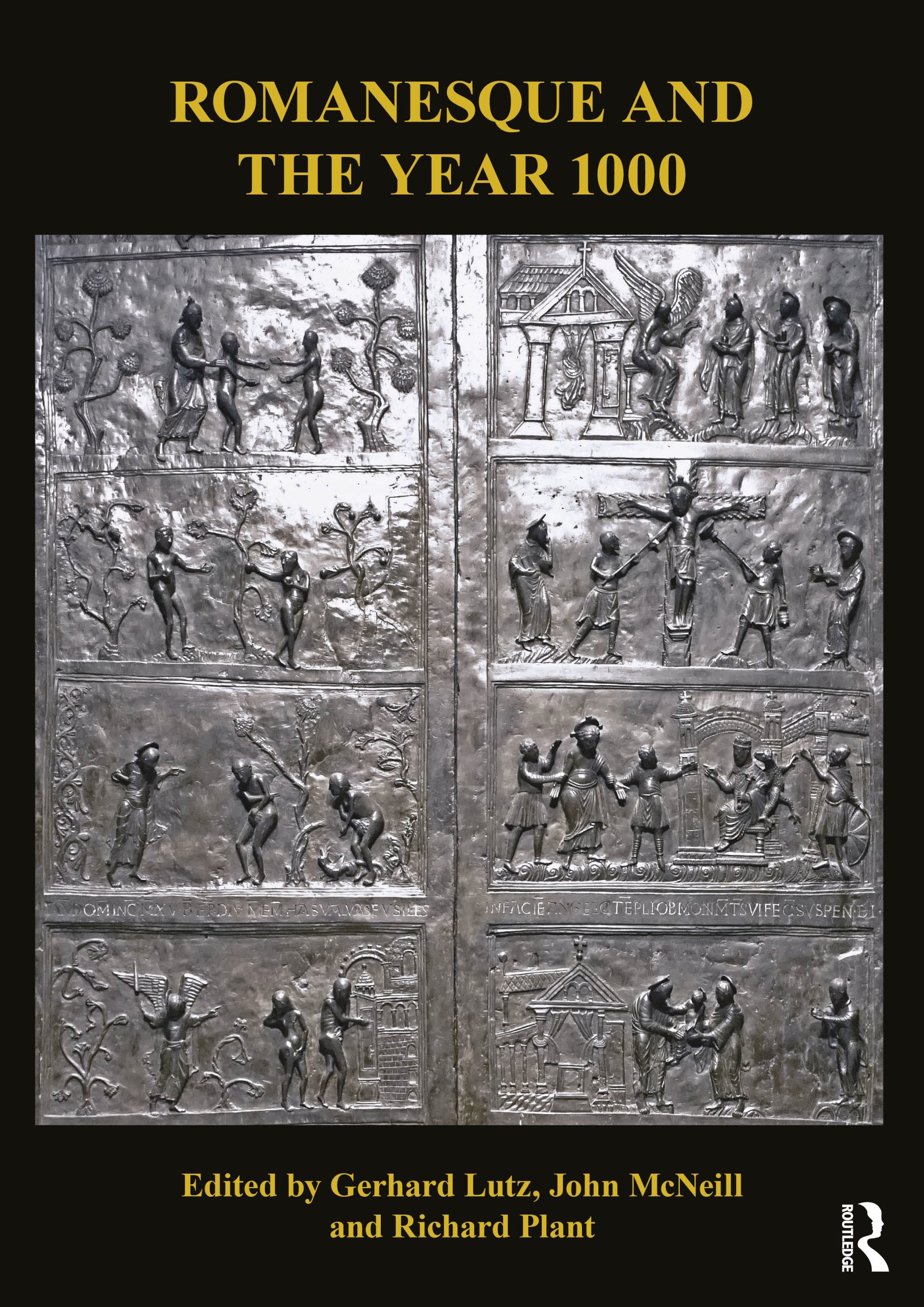Romanesque and the Year 1000 examines the art and architecture of the Latin West between c. 970 and c. 1030, a period which witnessed crucial developments in iconography and stylistic expression across a wide range of media.
Despite the complex political situation in late 10th-century Europe – a period marked by chaos in some areas and the effective exercise of authority in others – the last quarter of the century saw an apparent upsurge in artistic production in the Empire, southern Britain, Lombardy, the Alps, and the Mediterranean, albeit one whose survival rate is low. The decades after the millennium have left a larger residue of work, notably in France, Catalonia and northern Italy, but were the 1020s artistically more dynamic than the 980s? How might we describe the cultural climate of the Latin West between c. 970 and c. 1030? Individual chapters examine the influence of Carolingian art on artistic production around 1000; the emergence of new approaches to architecture in France, Germany, England and northern Italy; and the response of artists to perceived order and disorder at the turn of the millennium. There are studies of architectural sculpture in Catalonia and Castile, new town foundation in Saxony, and monastic architecture in southern Britain, together with examinations of Ottonian sarcophagi, book covers in gold and ivory, the wall-paintings at Reichenau, the patronage of Willigis at Mainz and Robert the Pious in northern France, the early Romanesque of Poland and Hungary, and the reflection of a new type of affective piety in the manuscript illumination of late Anglo-Saxon England.
Romanesque and the Year 1000 presents a wealth of new research in artistic production at a critical period and is of interest to art historians, archaeologists, and historians alike.
Table of Contents
- Chapter 1: Barbara Franzé, Image and society at Reichenau c. 1000
- Chapter 2: Lindy Grant, Transforming the kingdom: artistic patronage and the establishment of early Capetian kingship in France
- Chapter 3: Eliane Vergnolle, A monarch and his buildings: the case of Robert the Pious (996–1031)
- Chapter 4: Claude Andrault-Schmitt, The birth of Romanesque architecture in Aquitaine in the light of the patronage of Duke William the Great (993–1031)
- Chapter 5: Florian Meunier, Precious book covers in gold and ivory (c. 970–c. 1030): between Carolingian tradition and new design
- Chapter 6: Jesús Rodríguez Viejo, In our founder’s image: cult and identity in Ottonian manuscript portraits of saints
- Chapter 7: Rose Walker, Order and disorder through the eyes of scribes and illuminators in the Kingdom of Pamplona c. 970–c. 1000
- Chapter 8: Elizabeth V del Álamo, After al-Mansur: art in Castile 970–1030
- Chapter 9: Jordi Camps, Sculpture in Catalonia around the year 1000: ‘Corinthian’ capitals at Ripoll, Vic and Cornellà de Llobregat
- Chapter 10: Cecily Hennessy, Otto III and the widow Theophanu: a Byzantine court in the West?
- Chapter 11: Tobias Schoo, The cathedral, castle and market town of Halberstadt around the year 1000
- Chapter 12: Shirin Fozi, Unpacking the Ottonian sarcophagus 968–1022
- Chapter 13: Wilfried Keil, Willigis and his cathedral: the building of a new coronation church by the Archchancellor and Archbishop of Mainz
- Chapter 14: Bruno Klein, St Michael at Hildesheim as a magic machine
- Chapter 15: Michele Vescovi, Looking north: architecture in Emilia c. 1000
- Chapter 16: Tomasz Weclawowicz, Imitatio Imperii in early medieval Poland: some remarks contingent on an archaeological survey
- Chapter 17: Agata Gomolka, When gold was silver and silver was straw: the treasure of saints and warriors in Poland c. 1000
- Chapter 18: Béla Zsolt Szakács, The year 1000 in Hungary: turning point or continuation
- Chapter 19: Eric Fernie, St Laurence at Bradford-on-Avon, St Michael at Hildesheim and the use of squares in their planning
- Chapter 20: Richard Gem, England 970–1030: architecture and the monumental arts of the monastic reform movement
- Chapter 21: Marcello Angheben, The representation of the Old Testament God in Anglo-Saxon manuscripts and the emergence of affective piety
- Chapter 22: Sophie Kelly, Trinity and transformation at the turn of the millennium
